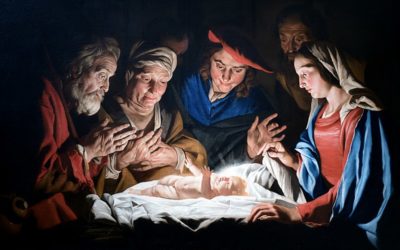The difficult days of Missouri and Liberty Jail passed in the spring of 1839 when Joseph Smith and his companions were able to escape captivity and join their families and other Saints in Quincy, Illinois, a community that had welcomed the refugees with open arms. Soon the Church established a new gathering place and headquarters on the banks of a bend in the Mississippi River that Joseph named Nauvoo. There, as pioneers, they drained and cleared the swampland, built homes, endured outbreaks of malaria and other diseases, and worked again to establish Zion.
On January 19, 1841, at Nauvoo, the Lord gave Joseph a momentous revelation that is now section 124 of the Doctrine and Covenants. It would serve as a spiritual charter for the Saints during their years in Illinois and provide lessons for Saints through all generations.
For more on the history of this section, click here.
The Nauvoo Temple
The new revelation included a commandment for the Saints to gather “and build a house to my name, for the Most High to dwell therein” (verse 27). The Kirtland Temple was not available as before, nor were the temple sites at Independence and Far West. “For there is not a place found on earth,” the Lord explained, “that he may come to and restore again that which was lost unto you, or which he hath taken away, even the fulness of the priesthood” (verse 28).
Joseph Smith had preached a sermon in 1840 about baptism for the dead, and the Saints were overjoyed to understand how this doctrine opened up the blessings of the gospel for their kindred dead. They began performing baptisms for their deceased ancestors in the Mississippi River.
Section 124 clarified the need for a temple. “For a baptismal font there is not upon the earth, that they, my saints, may be baptized for those who are dead— for this ordinance belongeth to my house, and cannot be acceptable to me, only in the days of your poverty, wherein ye are not able to build a house unto me” (verses 29‒30).
The Lord also revealed that the temple would be the place for ordinances not previously administered in their fulness in the latter days. “And verily I say unto you, let this house be built unto my name, that I may reveal mine ordinances therein unto my people; for I deign to reveal unto my church things which have been kept hid from before the foundation of the world, things that pertain to the dispensation of the fulness of times” (verses 40‒41). These included the full endowment and sealings for the living and the dead.
For more on the Nauvoo Temple, click here, here, and here.
The Nauvoo House
In addition to the Nauvoo Temple, the revelation commanded that the Saints build “a house for boarding, a house that strangers may come from afar to lodge therein; therefore let it be a good house, worthy of all acceptation, that the weary traveler may find health and safety while he shall contemplate the word of the Lord; and the cornerstone I have appointed for Zion” (verse 23). This hotel for visitors to contemplate God’s work was called the Nauvoo House.
The Saints made a valiant effort to build this house, but Joseph ultimately directed that the temple construction take priority. The Nauvoo House was never fully completed, but the Hotel Utah later built in Utah fulfilled many of its purposes.
For more on the Nauvoo House, click here. For more on the Hotel Utah, now the Joseph Smith Memorial Building, click here.
A Proclamation to the World
Section 124 also called for a proclamation “to all the kings of the world, to the four corners thereof, to the honorable president-elect, and the high-minded governors of the nation in which you live, and to all the nations of the earth scattered abroad” (verse 3). This proclamation was not completed during Joseph Smith’s lifetime but was completed not long after his death.
For more on this proclamation, click here.
Credit for the image at top of the page: Daguerreotype image of historic Nauvoo Temple, public domain, copied from https://upload.wikimedia.org/wikipedia/commons/8/8d/Nauvoo_Temple_daguerreotype.jpg.



